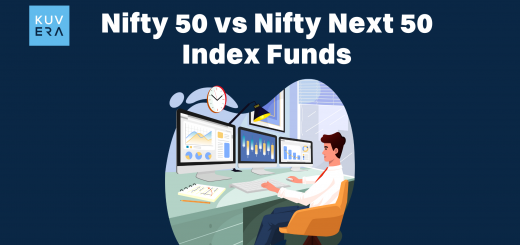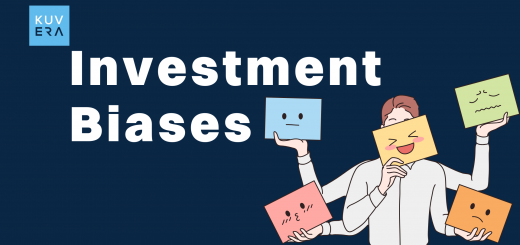Edelweiss AMC has launched the second tranche of Bharat Bond ETF and new series will have maturities of April 2025 and April 2031. This article is all about Fixed Income ETFs.
Nishant is associated with capital markets since 2005. In his recent role, he was managing the portfolio of an HNI as an employee. Nishant is an aspiring fee-only financial planner who intends to start an affordable fee-only advisory after getting the licence from SEBI.
Opinions expressed are the authors and should not be construed as investment advice from Kuvera.
Evolution of Fixed Income ETFs, Globally
In a historical move, Barclays Global Investors (BGI) launched Fixed Income ETFs, the first debt-based ETFs to hit the market in July’2002.
In January 2010, iShares, Blackstone’s ETF arm, launched suit of six municipal bond ETFs with target end dates ranging from 2012 to 2017.
Within six months, Claymore Securities, in June’2010, launched a series of seven target-maturity investment-grade corporate bond ETFs joining iShares in offering a strategy that has revolutionized the way investors think about fixed income funds.
Evolution of ETFs, more specifically fixed-income ETFs in India
In 2001, Benchmark Mutual Fund launched the first ETF in India, Nifty ETF Fund to replicate the performance of Nifty 50 TRI. The first Fixed Income ETF (popularly known as Liquid BeEs) was set up in 2004 and the first Gold ETF (Gold BeEs) in 2007. As on date, a total of six ETFs (excluding Bharat Bond) available in fixed income space, three options for liquid ETF – Nippon, ICICI and DSP & three options for GILT ETF – Nippon, LIC and SBI.
Liquid BeEs was the first money market ETF (Exchange Traded Fund) in the world.
The arrival of Corporate Bond ETF in India
On 01st February’ 2018, late finance minister Arun Jaitley, mentioned in his 2018-2019 budget speech about the debt ETF
The Government introduced Exchange Traded Fund Bharat-22 to raise ₹14,500 crore, which was over-subscribed in all segments. Department of Investment and Public Asset Management (DIPAM) will come up with more ETF offers including debt ETF.
The idea of the policymakers was to develop the corporate debt market, particularly in view of huge investment requirements of the economy in general and of the infrastructure sector in particular. The Government wanted to create a Debt ETF comprising of Bonds as underlying instruments issued by participating CPSEs/PSBs/PSUs to help them meet the capital expenditure & business needs.
Without wasting much time in April’2018, DIPAM came out with RFP for engagement of advisor for creation and launch of debt ETF. In July’2018, Advisor was finalized and in October’2018 legal advisor was finalized. In November’2018, RFP was rolled out for selection and appointment of Asset Management Company & in January’2019, Edelweiss AMC got appointed for creating, managing and launching the debt exchange-traded fund. In November’2019, Securities and Exchange Board of India laid down the norms for Debt ETF/Index Funds. In December’2019, after the approval of The Cabinet Committee on Economic Affairs and SEBI, India’s first Corporate Bond ETF – the first tranche of Bharat Bond ETF was launched. In the first tranche, Bharat Bond ETF was launched with two periods of maturity – 3 years and 10 years.
Debt mutual funds have brought some retail participation in fixed income markets by providing investors exposure to well-diversified fixed income portfolios, at the same time we have seen a lot of downgrades, defaults, segregations and even closure of schemes in the fixed income space. Moreover, open-ended debt funds have their own challenges such as clarity of credit mandate, average maturity in a prescribed range, illusionary liquidity and most importantly cost (asset-weighted median expense ratio for fixed income being 0.54% which ranges from 0.32% for direct plans to 1.15% for regular plans as per The Morningstar Global Investor Experience (GIE) study for 2019).
Target maturity ETFs or Defined Maturity ETFs, is a combination of Fixed Maturity Plans and Exchange Traded Funds. It matures like a Fixed Maturity Plan and underlying investments must mature on or before the date of maturity of fund whereas it accepts subscriptions and redemptions (minimum lot size) on AMC level just like Exchange Traded Fund and gets traded on an exchange. One more big difference between an open-ended debt fund and target maturity fund is the flexibility for management of interest rate risk. Unlike most types of open-ended mutual funds which maintain a constant duration, Target Maturity Funds naturally shorten the duration of the fund. Target Maturity ETFs score over open-ended mutual funds in disclosures as well. ETFs discloses the portfolio on a daily basis whereas open-ended funds disclose the portfolio only for month-end.
When compared to holding a direct bond, Target maturity ETFs also offer a level of liquidity, price transparency and trading flexibility which is typically not available in bonds which trade in over-the-counter (OTC) market.
Bharat Bond ETFs, one arrow many targets:
Bharat Bond ETF would offer Public Sector Companies an additional source of meeting their borrowing requirements apart from bank financing and expanding investors base through retail and HNIs participation (in tax-efficient structure) will increase the demand for their bonds and lead to reduced cost of borrowing. Being traded on exchange helps in better price discovery of the underlying portfolio and provide valuable information to all market participants. Target Maturity Bond ETFs will also create a ladder of Bond ETFs with different maturities across calendar years, with this tranche there will be four options. ETFs create a new ecosystem for market makers, advisors engaged in the creation of ETFs and index providers. All this will eventually deepen the bond markets, enhancing retail participation and reducing borrowing costs. Bharat Bond ETFs will provide safety (as the constituent bonds have a significantly lower chance of default), liquidity and predictability of returns to the investor. Just like other debt funds, it will also provide investors to invest a lower amount in a diversified portfolio thereby providing easy and low low-cost access to the debt market. AMC also gained a significant AUM under its belt and after the second tranche the ranking, in term of AUM, will go up significantly.
Key features for Bharat Bond ETF

Pre-defined Maturity Date:
Bharat Bond ETFs provide a certain maturity date to unitholders — just as individual bonds or Fixed Deposits do — when proceeds are distributed to the investors. Thus, defined maturity ETFs enable investors or advisors to create customized portfolios that address projected cash flow needs and precisely manage interest rate risk (except reinvestment risk). That’s a huge advantage, just like an actual bond can be held till maturity and redeemed at its full par value at maturity, making marked to market irrelevant in case of rate hike cycle. Traditional bond funds don’t have maturity dates, and investors who need back their corpus on a particular date can lose a lot if they have to withdraw in the middle or top of a rate-hike cycle.
Diversification
Bharat Bond ETFs typically offer exposure to a wide variety of individual bonds from multiple issuers, reducing issuer concentration risk and limiting the exposure to AAA bonds issued by public sector companies reduces the credit risk by a great extent. Of course, low volatility in NAV cannot be guaranteed in long-dated maturities.
Exchange-traded liquidity and transparency
Bharat Bond ETFs offer daily holdings disclosure as well as the real-time pricing, intra-day trading, and liquidity on exchange as well as through AMC (minimum size is 25 Crore). By contrast, open-ended mutual funds are priced once daily and holdings are disclosed on a monthly basis. In addition, Bharat Bond ETFs generally have tight bid/ask spreads, especially in comparison to those of the OTC bond market and OTC bond market can be non-transparent and thinly traded. There is no lock-in but there is an exit load for 30 days.
The daily average traded value in BHARAT Bond ETFs is between ₹ 3.5 to ₹ 4.00 crore which is significantly higher than existing G-sec ETFs which have an average daily trading volume of around ₹ 1 to ₹ 2 lakh only.
Lower costs
Expense ratios for ETFs are generally lower than those of actively managed mutual funds. Transaction costs for defined maturity ETFs are relatively lesser than that of open-ended mutual funds as generally, open-ended mutual funds have to maintain the duration within a mandated range, so these schemes keep on selling lower duration bonds and buy higher duration bonds whereas in target maturity ETFs the bonds in the portfolios are held until maturity (unless exited due to index rebalancing). Moreover, the way ETFs are structured and their unique in-kind unit creation/redemption process, the ETFs generally do not incur the trading costs associated with mutual funds, although this component is minuscule. Expense ratio as of now for Bharat Bond ETF is 0.0005% which is like ₹ 50 on a corpus of ₹ 1 Crore. Assuming a yield of 6.5%, TER/YIELD comes out to be 0.0077%, look at the image below, some of the schemes (in regular mode) are charging upward of 30% of the Yield as the expense ratio.

Tax-efficient structure
Mutual Funds are pass-through vehicles, taxation is at investors end, on net realised gains only. Holding an individual bond comes with the risk of concentration and coupon payments gets taxed at the marginal rate of taxation, without any indexation benefit. For tax-free bonds, tax is already deducted in the form of a lower coupon, so basically, they are tax-free for a reason (tax deducted coupon). Market Linked Debentures, due to a contingency condition, have the ability to defer taxation on account of accrued interest comes with the risk of extreme concentration. Market Linked Debentures issued by Reliance Home Finance have defaulted and even principal is exposed to complete risk now.
As these target maturity funds come under the mutual fund umbrella, holding period of more than 3 years makes them tax efficient.
Please note for fresh investors, in Bharat Bond ETF April 2023, indexation benefit will not be available as holding period will not be more than 3 years. Better to go for 2025 series, consult your financial advisor as well.
Bharat Bond ETFs Tranche 1:
Edelweiss AMC came up with the first tranche in December’2019 and the NFO (12 to 20th December’2019) received an enthusiastic response. Both tenors of ETFs (three years and ten years) got oversubscribed. The three-year category received subscription worth Rs 6,982 crore against issue size of Rs 3,000 crore, an over-subscription of ~ 2.3 times. The ten-year category also saw the decent response and was oversubscribed 1.4 times, it received Rs 5,413 crore against the issue size of Rs 4,000 crore. The government exercised the greenshoe option and retained the excess subscription of both the tenures. There was some confusion in the beginning as the deployment of funds got delayed. As per regulation, AMC could deploy funds even in the NFO period once the minimum subscription amount is received by the AMC.
The fund has performed relatively well due to the falling yields and comparatively what’s happening in fixed income space. But for HTM investors net realized yield will be a function of initial locked-in yield, tracking error, reinvestment yields and expense ratio.

The tracking difference for 2023 series is minuscule and for 2030 series it is 0.50% as on 03rd July’2020.
![]()
Bharat Bond ETF Tranche 2:
Edelweiss AMC has launched the second tranche of Bharat Bond ETF and new series will have maturities of April 2025 and April 2031. AMC is looking to raise 14000 Crore including a green option of 11000 Crore.
These ETFs will track newly launched (base date of 30th June’2020) Nifty Bharat Bond Index – April 2025 or Nifty BHARAT Bond Index – April 2031 depending on the maturity.
Below is the comparison, of Bharat Bond with traditional fixed deposit. In the table, it is difficult to showcase the tax outflow in fixed deposit, as the outflow will be every year on account of accrued interest. The same kind of comparison can also be made for tax-free bonds and Bharat bond ETFs, for High Net worth Individuals, Bharat Bond ETF has a decent probability of yielding better tax-adjusted returns.
These ETFs can also be used by investors or allocators to align their (or client’s) goal with the maturity of ETF thereby reducing the interest rate risk to minimal (please note reinvestment risk is still there).

These ETFs can also be used for immunizing a known future liability. Individual bonds and target maturity ETFs mature at a known point in time and provide relatively certain cash flows. Open-ended funds do not have a fixed maturity date, so the value of the fund at a future point is uncertain due to interest rate risk. When an investor has a predetermined future spending need especially in the near term, target maturity ETFs should be preferred over open-ended funds. As pointed out earlier as well, due to tracking error, reinvestment yield and expense ratio, there will be some degree of variability in the amount that a target maturity ETF returns on the maturity date.
Investors and Advisors having the view that rates will rise in future can invest in a shorter duration (consider taxation) target maturity ETFs to protect against falling bond prices due to rising interest rates. Investors worried about rising interest rates should understand that target maturity ETFs can protect them from loss through the return of principal (of underlying securities and therefore for the scheme). Investors also need to understand that NAV of these ETFs will adjust to that level at which their yields to maturity are at parity with those of a newly issued bond with similar characteristics (residual maturity, rating, etc).

Bharat Bond will be available in ETF as well as in Fund of Fund option. For buying ETF in NFO or from the secondary market, an investor must have a demat account. Investors, who do not have demat account can buy Fund of Fund. While buying from the ETF from the exchange, please understand, there is a difference in iNAV and traded price. Traded price can be at a premium or discount. Existing Bharat Bond ETFs have been consistently trading at a premium to its NAV owing to strong demand from investors on an exchange, please consider that difference. Fund of Fund wrapper comes at an additional cost, I must say minuscule, the additional cost of 0.05% and the retail investor should either buy the ETF in NFO or buy the FOF structure only, as in FOF structure AMC ensures the subscription and redemption on NAV. If investors are dealing with traditional brokerages, please account for the brokerage you will be paying to your broker, it can be saved on zero brokerage platforms.
One more confusion which was doing the round on social media is about the credit quality of upcoming tranche. DIPAM Secretary has said there have kept provision for inclusion of AA-rated papers in future tranches. Please understand, NSE, the index provider, will have to create an index matching duration and credit quality for the inclusion of AA-rated securities. In the upcoming NFO, credit quality is restricted to AAA. Re-balancing provisions are also clear, in case the credit rating is downgraded (from AAA to any investment grade) for any of the underlying company, the index provider will exclude the security in quarterly re-balancing but in case the credit rating is downgraded to below investment grade, within five days the index provider will replace the security.
Bharat Bond ETF/FOF is a great structure and can be a part of your core fixed income allocation. Remember fixed income allocation is for safety and certainty!!!

Nishant is passionate about mutual funds and personal finance and can be reached at twitter handle @stepbystep888
Opinions expressed are the authors and should not be construed as investment advice from Kuvera.
Interested in how we think about the markets?
Read more: Zen And The Art Of Investing
Watch/hear on YouTube:
Start investing through a platform that brings goal planning and investing to your fingertips. Visit kuvera.in to discover Direct Plans and start investing today.
#MutualFundSahiHai, #KuveraSabseSahiHai!










